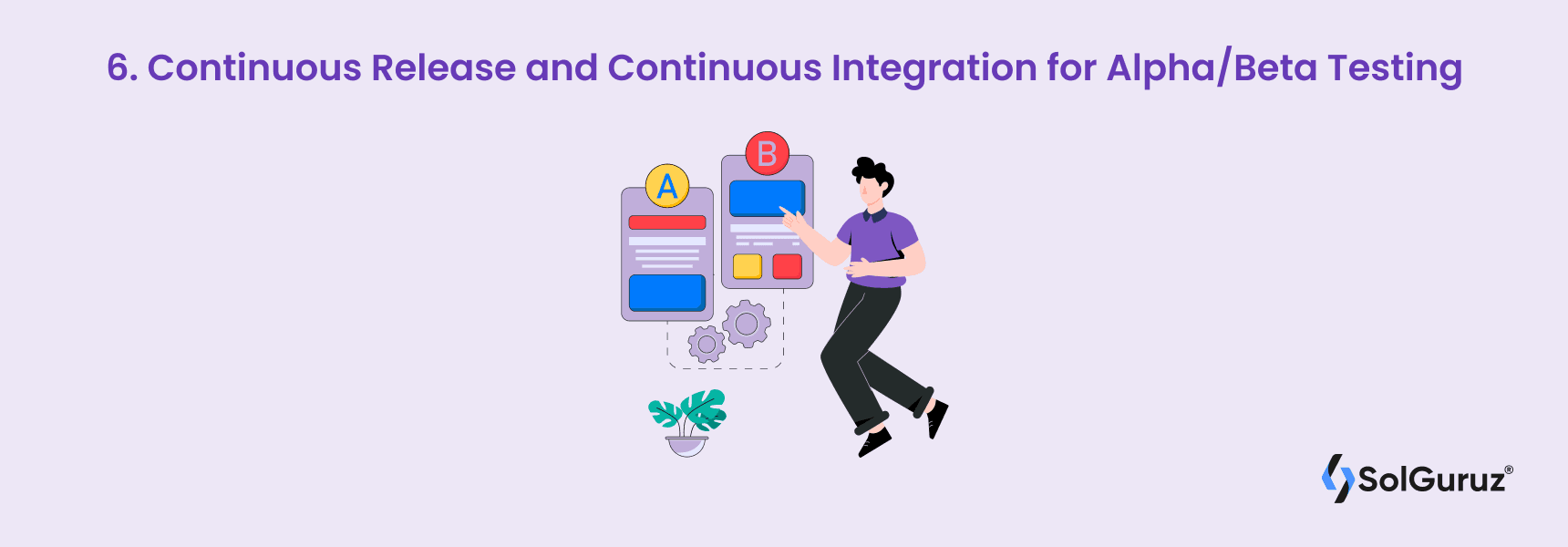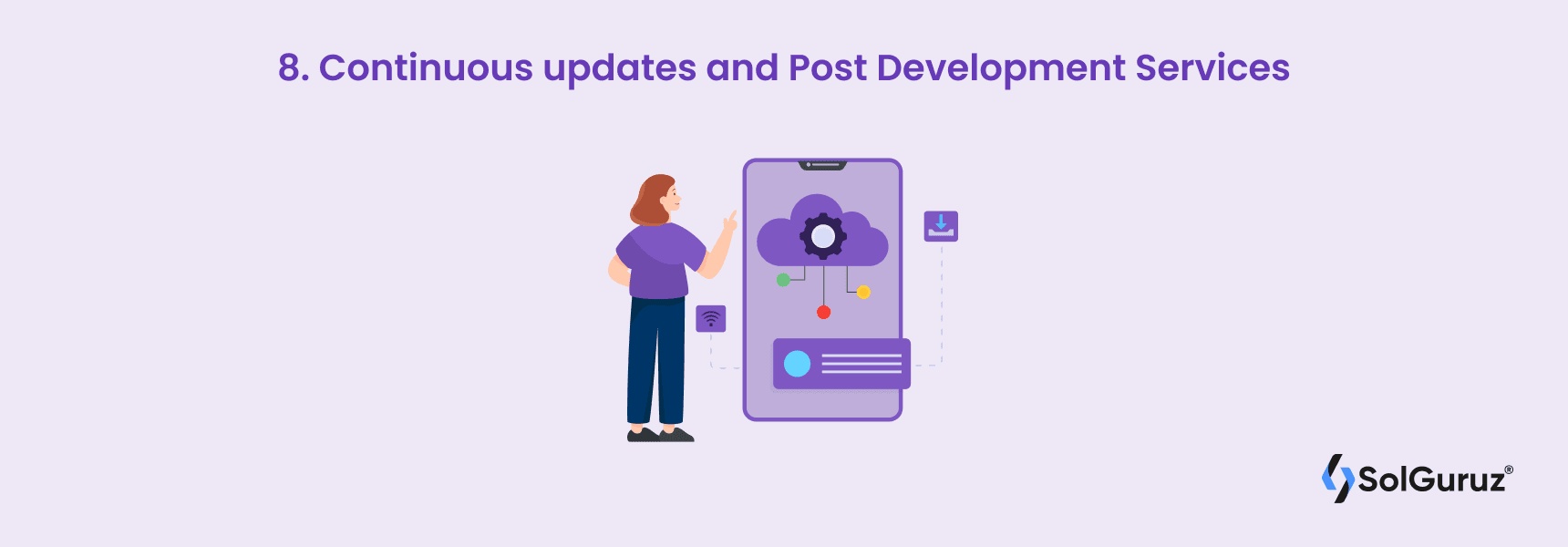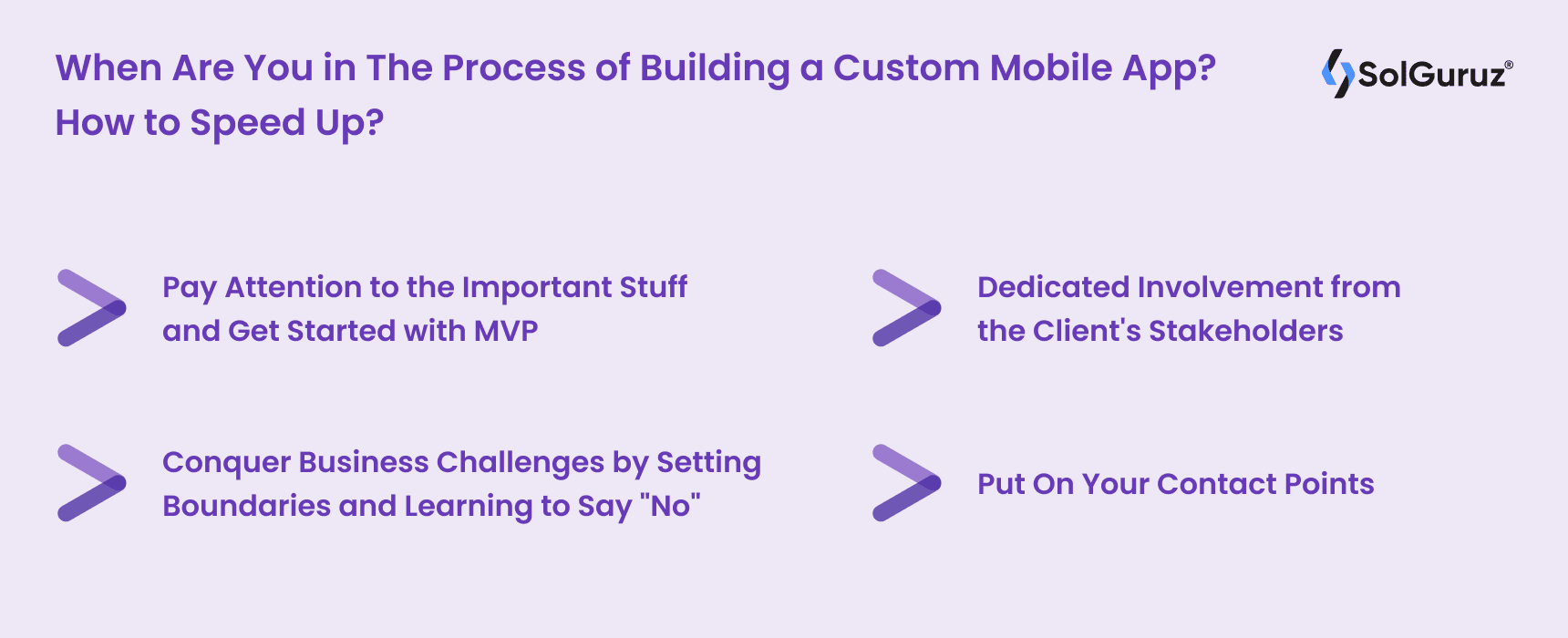Engineering Quality Solutions
As a client, is the time taken to build a custom mobile app bothering you? Here is a detailed insight to help you out for the same.

Deciding when to build a custom application is a crucial step in any business’s digital journey. Understanding the timeline involved is equally important. In this blog, we will explore the factors that influence how long it takes to build a custom mobile app and provide insights into when to build a custom application.
Depending on the scale of the undertaking and the method used, the completion time of custom mobile app development might range widely.
First, let’s define your “minimum viable product” (MVP) and discuss the ingenuity and programming that went into making it a reality.
Usually, it takes a mobile app development company like ours anywhere from 12 to 16 weeks to produce a minimum viable product (MVP), from first client meetings and brainstorming to a public release on the App Store. There have been times when our team has worked quicker or slower than this, but this is the typical amount of time required to complete a significant project.
Also, the phrase “worthwhile” is crucial. Hundreds of thousands of Android and iOS applications are downloaded daily, and almost as many are uninstalled. There is a good chance that you have already come across a couple of them.
Quality takes time, and the trademarks of well-made apps are a beautiful, intuitive interface design and a smooth, necessary user experience.
Every year since 2016, mobile app downloads have increased; in 2019, they will have surpassed 200 billion globally. Compared to 2016, when there were 140.7 billion app downloads, 255 billion were made in the most recent metric year.
The future of Custom mobile app development seems to be bright. You need to know the many phases of app creation if you’re running a company. When you understand the custom mobile app development process and its stages, you may save money and time while delivering exceptional results.
The development time for an app typically ranges from three to nine months. However, this varies considerably based on the app’s complexity and the project’s overall design. Some steps take more time than others, but these are some of the more time-consuming ones:

This is an aspect that is often overlooked. A stronger brief means less time spent figuring out the details of your custom app development.

Specific details must be included regardless of who you’re collaborating with (things like contact and company info). However, the following will help your development business grasp your vision more fully:
Requests for proposals (RFPs) are like a road plan you may send to the mobile app development company. Requests for proposals (RFPs) are problematic because they steer businesses in the same direction and deny developers the chance to demonstrate their unique approaches.
Requests for proposals (RFPs) may be helpful, but only if they provide custom mobile app development companies with a chance to stand out by challenging assumptions, investigating new avenues of inquiry, and contributing novel facts or ideas.

It would help if you did much more than simply make sure your app concept will function to do enough research on it. That’s the first thing you should hear from the firm working on your project.
The goal of the concept phase is to establish a common understanding of the market, your consumers, the issue, and the metrics by which your app’s success will be measured.
It is expected that you will have the following after this phase:
“Minimum Viable Product”
MVP: These are the very minimum features your app must have. This should be enough to satisfy the needs of your core audience from the get-go without having to think about bells and whistles that can wait until later.
Prototype app:
The term “prototype” does not imply a fully operational app version. To ensure that your project’s most vital features and functionalities are thoroughly tested and verified before development begins, your prototype should be built around those components.

During a design sprint, you may test your app’s key features. They take around a week or two (each sprint) to finish. Still, suppose you don’t utilize them. In that case, issues and adjustments will develop later on and take up much more time throughout the project.
This phase of custom mobile app development allows you to construct a rudimentary design for a desired feature, which can then be tested with users to glean valuable feedback. To what extent do people like this feature, how often do they use it, any problems they have when using it, how simple or complex it is to get to this page, and so forth?

Rapid prototyping complements design sprints by facilitating the creation of simple, fast prototypes of an app that can be tested with users and refined depending on their input.
In contrast to waiting until the final version to realize you need to make a lot of changes, you and your developers will save a lot of time by prototyping in this manner and making the necessary adjustments at the earliest possible stage.
How to Recognize a Bad App Development Firm
The inability to make prototypes quickly. You can guarantee that the time it takes to complete your project will rise by a factor of ten if they don’t recommend using fast prototyping to test ideas with actual people.
You and your engineers won’t identify the modifications or enhancements your users will need. This is true even if you include time for prototyping in the original custom mobile app plan.
Make sure you and the developers have discussed the potential for significant delays if your program must access external data.

Prototyping is different from than final application development process. The final app development process differs from the fundamental methods on the platforms, like material, process, and verification.
Application development includes defining the technical architecture, stack, and milestones. It is no more a mockup. Hence, it takes more time and ability to develop an application with backend and server technology, API, and mobile app front end.
For developing any custom mobile app, there are literally four different approaches

Helping an app undergo an accurate QA test is important to find the bugs and fix them at the right time before submitting the app to the store. The AB testing procedure is best followed by reputed custom mobile app development agencies in order to fix the app with the best test case.
Four types of mobile app testing that is generally followed:

Two primary activities use time during deployment: submission and review. You’ll need the following items when submitting your software to either the App Store or the Google Play Store:
In which platform does the deployment process take the most time?
Apple’s iOS is superior because of the company’s meticulous review procedure. While an algorithm first checks your app on Android for blatant infractions, a human review team examines every aspect of your app on iOS.

This one is a little bit more difficult to forecast. Because of the requirement for updates and maintenance, you will still need to commit time to the app after it has been released to the public.
Because the backlog of app ideas and features might be of any length, any priority, and consuming time and expense to build, it is impossible to predict how much time will be used by ongoing upgrades.
The people developing your app should already have a general notion of how much time and money you want to spend making continual enhancements and providing support around the clock.
Custom mobile app development is a lot of fun, but there’s also the temptation to rush through some parts of the process. Now is the moment to talk to your development team about strategies to shorten the timeline, if feasible.
We provide these options when a stakeholder isn’t happy with the mobile app development timeframe and wants to save time.

Building the app may be done in two different methods. You could either attempt to cram in as many features as possible with as little effort as possible, or you may release as few while keeping the quality high.
The solution is obvious: create a minimum viable product (MVP), especially if you need to release it quickly. Getting a product out the door faster is best to pare it down to its essentials. So, don’t be scared to leave certain functionality or customization for future app releases.
You may do these things to speed up the app development process from your side. However, you are not the only variable in this equation. Here is what you may expect from a mobile app development company, and it is something we at SolGuruz do every day.
Working effectively with stakeholders is a talent and art we honed throughout our projects. It’s never about checking boxes for us at SolGuruz. Instead, we focus on partnering with our customers.
Simply put, we do everything it takes to help the customer quickly put the concept to the test. Rejecting specific ideas may be necessary at times. There is a concerted effort on our part to ensure that the clientele is aware of the ultimate objective.
While it may not seem like it at first, expressing yourself effectively and having your business’s end aim in mind might help you save time.
Communication takes the lion’s part of the custom mobile app development process. When working with an outsourcing partner, you should expect an immediate uptick in the frequency you must respond to Slack messages and participate in Zoom conferences.
It’s inevitable. Since you have a say in the outcome, you may save time by acting swiftly and articulating your position clearly and promptly.
Instead of having everyone on the team participate in meetings and setting up several channels for communication, we’ve assigned someone to be the main point of contact.
Typically, this is a solution architect or product manager. They keep you abreast of the latest developments in the project and inform you of any setbacks or difficulties that may arise.
That’s how we keep things tidy. As a stakeholder, you may go to one person for answers and progress reports on the project. It’s efficient, and it helps avoid misunderstandings.
When you approach an outsourcing business for assistance with app development and inquire, “How long does it take to build an app?” – You probably know the approximate time.
We learned how to build a custom mobile app and discovered that a larger team doesn’t always guarantee a quicker development period. There’s always a method to cut down on waiting time, however.
Suppose you’ve already done market research or are familiar with the landscape. In that case, we can skip the research and validation phases. More vital communication ability is the key to the most efficient methods for minimizing development and design times.
Custom mobile app development can get off the ground with crystal-clear specifications, prompt replies, and shared accountability.
The cost of a custom app depends on several factors, like – The complexity of your app, Features, functionality, platform, etc.
Usually, it takes a mobile app development company like ours anywhere from 12 to 16 weeks to produce a minimum viable product (MVP), from first client meetings and brainstorming to a public release on the App Store.
At SolGuruz, we use the latest and upto the mark project management tools and agile project management techniques.
Written by
Paresh is a Co-Founder and CEO at SolGuruz, who has been exploring the software industry's horizon for over 15 years. With extensive experience in mobile, Web and Backend technologies, he has excelled in working closely with startups and enterprises. His expertise in understanding tech has helped businesses achieve excellence over the long run. He believes in giving back to the society, and with that he has founded a community chapter called "Google Developers Group Ahmedabad", he has organised 100+ events and have delivered 150+ tech talks across the world, he has been recognized as one of the top 10 highest reputation points holders for the Android tag on Stack Overflow. At SolGuruz, we believe in delivering a combination of technology and management. Our commitment to quality engineering is unwavering, and we never want to waste your time or ours. So when you work with us, you can rest assured that we will deliver on our promises, no matter what.
Unsure how long it takes to develop a custom app? SolGuruz can provide a timeline and roadmap tailored to your specifications.

1 Week Risk-Free Trial

Strict NDA

Flexible Engagement Models
Give us a call now!

+1 (646) 703 7626
Discover the latest tech trends from SolGuruz - empowering businesses with innovative solutions and transformative insights!